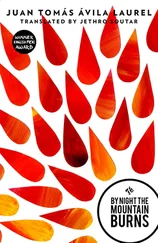Babur - The Bābur-nāma
Здесь есть возможность читать онлайн «Babur - The Bābur-nāma» — ознакомительный отрывок электронной книги совершенно бесплатно, а после прочтения отрывка купить полную версию. В некоторых случаях можно слушать аудио, скачать через торрент в формате fb2 и присутствует краткое содержание. Жанр: foreign_antique, foreign_prose, на английском языке. Описание произведения, (предисловие) а так же отзывы посетителей доступны на портале библиотеки ЛибКат.
- Название:The Bābur-nāma
- Автор:
- Жанр:
- Год:неизвестен
- ISBN:нет данных
- Рейтинг книги:4 / 5. Голосов: 1
-
Избранное:Добавить в избранное
- Отзывы:
-
Ваша оценка:
- 80
- 1
- 2
- 3
- 4
- 5
The Bābur-nāma: краткое содержание, описание и аннотация
Предлагаем к чтению аннотацию, описание, краткое содержание или предисловие (зависит от того, что написал сам автор книги «The Bābur-nāma»). Если вы не нашли необходимую информацию о книге — напишите в комментариях, мы постараемся отыскать её.
The Bābur-nāma — читать онлайн ознакомительный отрывок
Ниже представлен текст книги, разбитый по страницам. Система сохранения места последней прочитанной страницы, позволяет с удобством читать онлайн бесплатно книгу «The Bābur-nāma», без необходимости каждый раз заново искать на чём Вы остановились. Поставьте закладку, и сможете в любой момент перейти на страницу, на которой закончили чтение.
Интервал:
Закладка:
743
i. e. the hollow, long, and small-bāzār roads respectively. Panjhīr is explained by Hindūs to be Panj-sher, the five lion-sons of Pandu (Masson, iii, 168).
744
Shibr is a Hazāra district between the head of the Ghūr-bund valley and Bāmīān. It does not seem to be correct to omit the tū from the name of the pass. Persian tū , turn, twist (syn. pīch ) occurs in other names of local passes; to read it here as a turn agrees with what is said of Shibr-tū pass as not crossing but turning the Hindū-kush (Cunningham). Lord uses the same wording about the Ḥājī-ghāt (var. – kāk etc.) traverse of the same spur, which “turns the extremity of the Hindū-kush”. See Cunningham’s Ancient Geography , i, 25; Lord’s Ghūr-bund (JASB 1838 p. 528), Masson, iii, 169 and Leech’s Report VII.
745
Perhaps through Jālmīsh into Saighān.
746
i. e. they are closed.
747
It was unknown in Mr. Erskine’s day (Mems. p. 140). Several of the routes in Raverty’s Notes (p. 92 etc.) allow it to be located as on the Īrī-āb, near to or identical with Bāghzān, 35 kurohs (70 m.) s.s.e. of Kābul.
748
Farmūl, about the situation of which Mr. Erskine was in doubt, is now marked in maps, Ūrghūn being its principal village.
749
15 miles below Atak (Erskine). Mr. Erskine notes that he found no warrant, previous to Abū’l-faẓl’s, for calling the Indus the Nīl-āb, and that to find one would solve an ancient geographical difficulty. This difficulty, my husband suggests, was Alexander’s supposition that the Indus was the Nile. In books grouping round the Bābur-nāma , the name Nīl-āb is not applied to the Indus, but to the ferry-station on that river, said to owe its name to a spring of azure water on its eastern side. (Cf. Afẓal Khān Khattak , R.’s Notes p. 447.)
I find the name Nīl-āb applied to the Kābul-river: – 1. to its Arghandī affluent (Cunningham, p. 17, Map); 2. through its boatman class, the Nīl-ābīs of Lālpūra, Jalālābād and Kūnār (G. of I. 1907, art. Kābul); 3. inferentially to it as a tributary of the Indus (D’Herbélot); 4. to it near its confluence with the grey, silt-laden Indus, as blue by contrast (Sayyid Ghulām-i-muḥammad, R.’s Notes p. 34). (For Nīl-āb (Naulibis?) in Ghūr-bund see Cunningham, p. 32 and Masson, iii, 169.)
750
By one of two routes perhaps, – either by the Khaibar-Nīngnahār-Jagdālīk road, or along the north bank of the Kābul-river, through Goshṭa to the crossing where, in 1879, the 10th Hussars met with disaster. See S.A. War , Map 2 and p. 63; Leech’s Reports II and IV (Fords of the Indus); and R.’s Notes p. 44.
751
Hāru, Leech’s Harroon, apparently, 10 m. above Atak. The text might be read to mean that both rivers were forded near their confluence, but, finding no warrant for supposing the Kābul-river fordable below Jalālābād, I have guided the translation accordingly; this may be wrong and may conceal a change in the river.
752
Known also as Dhān-kot and as Mu‘az̤z̤am-nagar ( Ma‘āṣiru’l-‘umrā i, 249 and A.N. trs. H.B. index s. n. Dhān-kot). It was on the east bank of the Indus, probably near modern Kālā-bāgh, and was washed away not before 956 AH. (1549 AD. H. Beveridge).
753
Chaupāra seems, from f. 148b, to be the Chapari of Survey Map 1889. Bābur’s Dasht is modern Dāman.
754
aīmāq , used usually of Mughūls, I think. It may be noted that Lieutenant Leech compiled a vocabulary of the tongue of the Mughūl Aīmāq in Qandahār and Harāt (JASB 1838, p. 785).
755
The Āyīn-i-akbarī account of Kābul both uses and supplements the Bābur-nāma .
756
viz. ‘Alī-shang, Alangār and Mandrāwar (the Lamghānāt proper), Nīngnahār (with its bulūk , Kāma), Kūnār-with-Nūr-gal, (and the two bulūks of Nūr-valley and Chaghān-sarāī).
757
See Appendix E, On Nagarahāra .
758
The name Adīnapūr is held to be descended from ancient Udyānapūra (Garden-town); its ancestral form however was applied to Nagarahāra, apparently, in the Bārān-Sūrkh-rūd dū-āb , and not to Bābur’s dārogha’s seat. The Sūrkh-rūd’s deltaic mouth was a land of gardens; when Masson visited Adīnapūr he went from Bālā-bāgh (High-garden); this appears to stand where Bābur locates his Bāgh-i-wafā, but he was shown a garden he took to be this one of Bābur’s, a mile higher up the Sūrkh-rūd. A later ruler made the Chār-bāgh of maps. It may be mentioned that Bālā-bāgh has become in some maps Rozābād (Garden-town). See Masson, i, 182 and iii, 186; R.’s Notes ; and Wilson’s Ariana Antiqua , Masson’s art.
759
One of these tangī is now a literary asset in Mr. Kipling’s My Lord the Elephant . Bābur’s 13 y. represent some 82 miles; on f. 137b the Kābul-Ghaznī road of 14 y. represents some 85; in each case the yīghāch works out at over six miles (Index s. n. yīghāch and Vigne, p. 454). Sayyid Ghulām-i-muḥammad traces this route minutely (R.’s Notes pp. 57, 59).
760
Masson was shewn “Chaghatai castles”, attributed to Bābur (iii, 174).
761
Dark-turn, perhaps, as in Shibr-tū, Jāl-tū, etc. (f. 130b and note to Shibr-tū).
762
f. 145 where the change is described in identical words, as seen south of the Jagdālīk-pass. The Bādām-chashma pass appears to be a traverse of the eastern rampart of the Tīzīn-valley.
763
Appendix E, On Nagarahāra .
764
No record exists of the actual laying-out of the garden; the work may have been put in hand during the Mahmand expedition of 914 AH. (f. 216); the name given to it suggests a gathering there of loyalists when the stress was over of the bad Mughūl rebellion of that year (f. 216b where the narrative breaks off abruptly in 914 AH. and is followed by a gap down to 925 AH. -1519 AD.).
765
No annals of 930 AH. are known to exist; from Ṣafar 926 AH. to 932 AH. (Jan. 1520-Nov. 1525 AD.) there is a lacuna. Accounts of the expedition are given by Khāfī Khān, i, 47 and Firishta, lith. ed. p. 202.
766
Presumably to his son, Humāyūn, then governor in Badakhshān; Bukhārā also was under Bābur’s rule.
767
Here, qārī , yards. The dimensions 10 by 10, are those enjoined for places of ablution.
768
Presumably those of the tūqūz-rūd , supra . Cf. Appendix E, On Nagarahāra .
769
White-mountain; Pushtū, Spīn-ghur (or ghar).
770
i. e. the Lamghānāt proper. The range is variously named; in (Persian) Siyāh-koh (Black-mountain), which like Turkī Qarā-tāgh may mean non-snowy; by Tājīks, Bāgh-i-ātāka (Foster-father’s garden); by Afghāns, Kanda-ghur, and by Lamghānīs Koh-i-būlān, – Kanda and Būlān both being ferry-stations below it (Masson, iii, 189; also the Times Nov. 20th 1912 for a cognate illustration of diverse naming).
Читать дальшеИнтервал:
Закладка:
Похожие книги на «The Bābur-nāma»
Представляем Вашему вниманию похожие книги на «The Bābur-nāma» списком для выбора. Мы отобрали схожую по названию и смыслу литературу в надежде предоставить читателям больше вариантов отыскать новые, интересные, ещё непрочитанные произведения.
Обсуждение, отзывы о книге «The Bābur-nāma» и просто собственные мнения читателей. Оставьте ваши комментарии, напишите, что Вы думаете о произведении, его смысле или главных героях. Укажите что конкретно понравилось, а что нет, и почему Вы так считаете.











